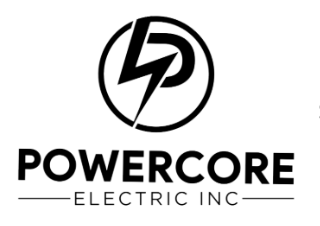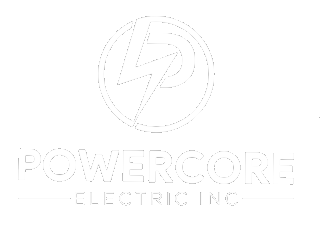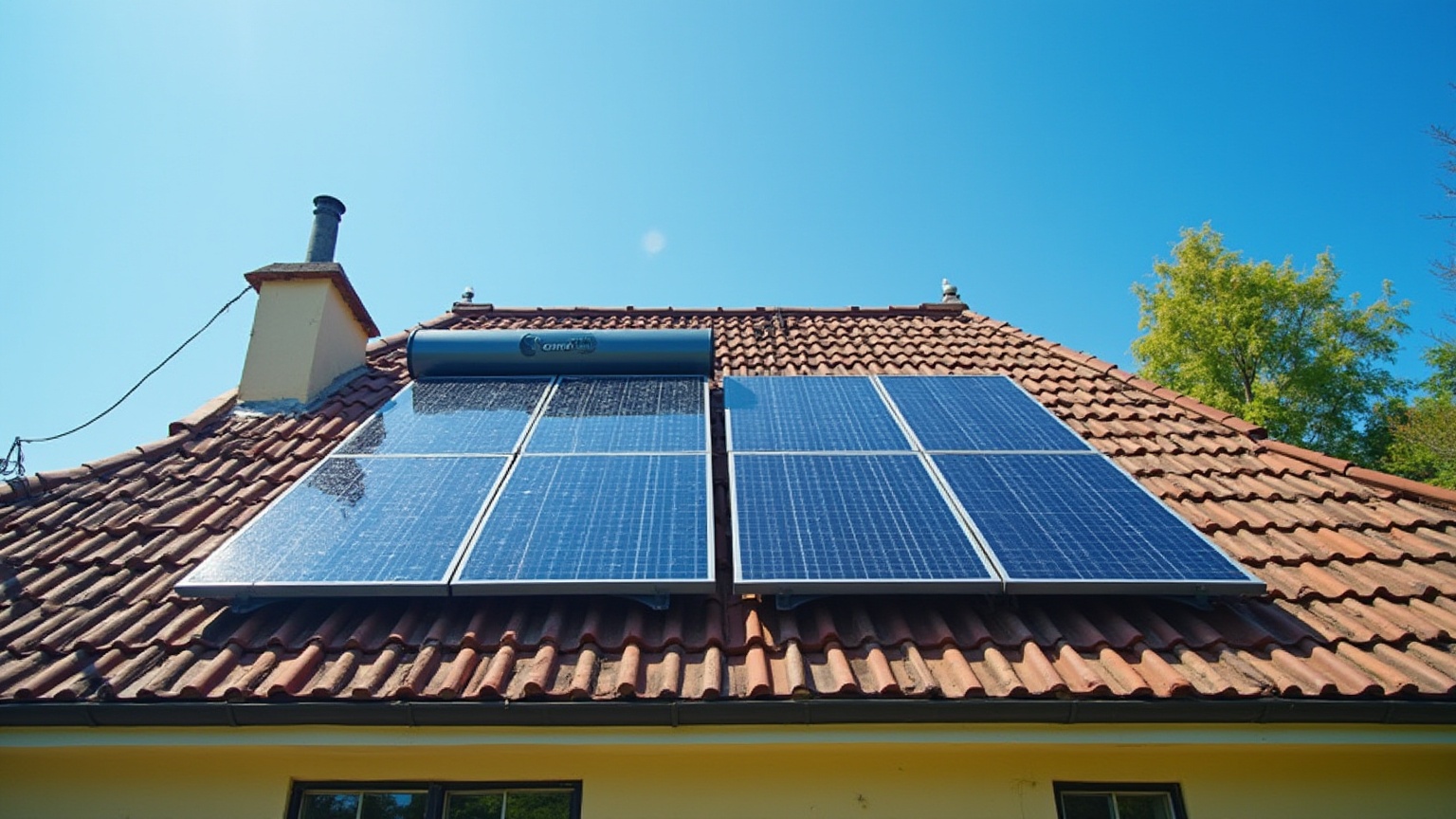Overview
Solar domestic hot water systems harness sunlight to provide efficient heating for households, resulting in significant energy cost savings and environmental benefits. The article outlines key factors for homeowners to consider, such as local climate, system type (active vs. passive), installation requirements, and potential financial incentives, all of which contribute to the long-term viability and effectiveness of these sustainable solutions.
Introduction
Harnessing the power of the sun to heat water is not just a trend; it’s a sustainable solution that can transform how homeowners manage their energy needs. Solar domestic hot water systems offer an innovative way to reduce utility bills while contributing to a healthier planet.
With a variety of options available, homeowners can choose from:
- Active systems that maximize efficiency
- Simpler passive designs
Homeowners can find the perfect fit for their lifestyle and budget. As the solar market continues to evolve, understanding the key components, installation processes, and maintenance requirements can empower homeowners to make informed decisions.
By tapping into this renewable resource, not only can families enjoy significant savings, but they can also take pride in playing a part in the global movement toward sustainability.
Introduction to Solar Domestic Hot Water Systems
Solar domestic hot water systems are a fantastic method to capture the sun’s energy for warming fluids in your home, resulting in considerable savings on energy expenses. These setups mainly include:
- Sunlight collectors that capture light
- A storage tank to hold the heated water
- A circulation network that effectively transfers water between the collectors and the tank
When selecting a solar heater, it is essential to consider several key factors.
Start by evaluating your local climate and the quantity of sunlight your area gets, as these elements directly influence the effectiveness of the setup. Assess your household size and hot supply requirements to identify the appropriate capacity for your setup. Budget is also an important factor; although the initial investment in solar domestic hot water systems may be considerable, they offer enduring savings by lowering utility expenses.
Additionally, look for solutions that are easy to install and maintain, and ensure they come with comprehensive warranties and reliable manufacturer support for long-term satisfaction. The First Hour Rating (FHR) is another important metric to consider, as it measures the amount of heated liquid a heater can supply in the first hour of use. A system with a high FHR might be more efficient for households with .
By utilizing solar domestic hot water systems to harness sunlight energy, you not only lower your utility expenses but also aid in creating a more sustainable planet. In fact, the potential adoption of renewable energy is equivalent to planting 30 billion trees and removing 1.86 billion cars from the road, showcasing the remarkable environmental benefits of this energy source. Additionally, with recent market advancements, such as Ariston Holding N.V.’s purchase of Chromagen for $35.84 million, is evolving, allowing for more effective and efficient solutions.
As predictions for residential photovoltaic capacity and usage in the U.S. from 2022 to 2050 suggest considerable expansion, now is the ideal moment to incorporate thermal heating solutions into your home. As JD Dillon, the chief marketing officer for Tigo Energy, puts it, ‘Solar is just getting’ started!’ Embrace this sustainable solution today and enjoy both the economic and ecological advantages of sun-based heating.
Types of Solar Water Heating Systems: Active vs. Passive
Active solar domestic hot water systems are designed with pumps and controls that circulate fluid between the solar collector and the storage tank, ensuring greater performance and faster heating. This makes solar domestic hot water systems an ideal choice for homes that have greater hot water demands. For example, recent comparisons have revealed that an effective active setup can attain a remarkable overall performance rate of 31.07%, significantly exceeding the 19% effectiveness common among certain passive setups.
Industry expert Zafar Ali emphasizes this benefit, stating, ‘The overall performance of this setup was determined to be 31.07% compared to 19%, which surpasses the arrangement examined by other researchers.’
Conversely, solar domestic hot water systems that utilize passive water heating solutions rely on natural convection and do not use pumps, which simplifies their design and often results in lower installation costs. While solar domestic hot water systems may not attain the same efficiency levels as active setups, they offer an excellent low-maintenance choice for homeowners. In areas such as Southern California, where sunlight is plentiful, the effectiveness of solar domestic hot water systems is particularly pronounced.
For example, a household reported a remarkable reduction in energy expenses, over 70%, after installing a water heating apparatus combined with a heat exchanger. This not only provided substantial savings but also contributed to their sustainability efforts by minimizing their carbon footprint. Similarly, areas with cooler climates have seen passive designs, such as large south-facing windows, effectively capturing sunlight and reducing energy expenses.
With Pakistan receiving an annual irradiance of 1900-2200 kWh/m², homeowners in the region can effectively utilize solar domestic hot water systems to benefit from renewable energy. Financial considerations are also crucial; for instance, a more efficient model (Model B) might involve an additional cost of $85, but it boasts a payback period of only 1.5 years. This information highlights the importance of weighing the advantages of solar domestic hot water systems—such as faster heating and higher efficiency—against the simplicity and lower upfront costs of passive alternatives.
Additionally, integrating sunlight heaters with heat exchangers can significantly enhance energy efficiency, making them a worthwhile investment for homeowners. By understanding these factors, including , homeowners can make informed decisions that align with both their financial considerations and long-term environmental goals. For more information on how to make the switch to sustainable energy, contact Powercore Electric Inc. today!
Installing Your Solar Domestic Hot Water System: Key Steps and Considerations
When contemplating the installation of solar domestic hot water systems, the initial step is to evaluate your hot water requirements in conjunction with the available roof area. This ensures you select a system that fits your lifestyle and home perfectly. As of 2023, the median price of photovoltaic energy is $4.20/W, which is over $1/W higher than the average quoted price on EnergySage, making it crucial to evaluate your financial investment carefully.
Additionally, with the recent drop in energy prices to pre-pandemic levels as noted by Emily Walker, ‘it’s a great time to get quotes!’ potential buyers are encouraged to explore their options now. Next, you’ll need to choose between an active or passive water heating solution, including solar domestic hot water systems, each with unique benefits based on your preferences and budget.
Familiarizing yourself with local building codes and securing necessary permits is essential, as it helps avoid headaches down the line. The installation process typically involves:
- Mounting collectors on your roof
- Connecting them to a storage tank
- Ensuring your pipes are well-insulated to prevent heat loss
While tackling this as a DIY project is possible, hiring a professional installer can be a wise investment. Their expertise ensures everything is set up correctly and efficiently, maximizing your system’s performance.
Keep in mind, the quality of your installation directly affects how effectively your heating system operates, resulting in long-term savings and ecological advantages. Regular maintenance is key; as highlighted in the case study titled ‘Maintenance and Longevity,’ solar domestic hot water systems typically last around 20 years and require semi-annual maintenance to ensure proper functioning. This involves:
- Inspecting for leaks
- Cleaning the collectors
- Confirming the setup is functioning at optimal performance
These actions not only extend the longevity of your setup but also improve its performance, leading to considerable financial savings, estimated between $400 to $600 each year, and lowering your carbon footprint. Furthermore, consider incorporating to retain excess power, ensuring you have dependable energy even when sunlight is restricted. Common selections consist of lithium-ion batteries, recognized for their effectiveness and durability, rendering them a superb option for improving your heating setup.
Maintenance and Troubleshooting for Solar Water Heaters
Maintaining your heating system in optimal condition is crucial for guaranteeing it functions at maximum efficiency. Just like your solar panels, regular maintenance tasks for solar domestic hot water systems should include:
- Checking fluid levels in active setups
- Inspecting for leaks
- Ensuring that solar collectors are clean and free from [debris
Suggested cleaning techniques](https://gopowercoreinc.com/category/general/page/21) include utilizing a soft brush or sponge with mild soap and a gentle solution to carefully eliminate dirt without scratching the surface.
A little attention goes a long way—monitoring your setup’s performance can help you catch any drops in efficiency early on. Common issues to look out for include insufficient hot liquid production, which could stem from dirty collectors or low fluid levels. If you notice these problems persisting, it might be time to consult with a professional installer who can tackle more complex issues.
Interestingly, ensuring is clean can significantly enhance energy production; dust and debris can hinder performance just like it can with photovoltaic panels. According to the Ministry of New and Renewable Energy, the installation of one million solar domestic hot water systems can significantly reduce carbon emissions by about 1.5 million tons, showcasing the collective impact of maintaining these systems properly. Additionally, a reliability model generated from 15 years of service and maintenance data emphasizes the importance of regular upkeep to ensure long-term efficiency.
The median loss rate for photovoltaic performance is 0.75% annually, with 90% of installations experiencing less than a 2% loss each year, highlighting the financial implications of these installations. Staying proactive with maintenance not only extends the life of your setup but also contributes to a healthier environment, aligning with your goal of a more sustainable and eco-friendly home.
Understanding Costs, Savings, and Incentives for Solar Water Heating
When evaluating the setup of a photovoltaic domestic hot heating arrangement, eco-conscious homeowners can anticipate expenses to vary from $3,000 to $7,000, based on the kind of arrangement and the intricacy of installation. These setups often result in significant savings on energy expenses, with numerous homeowners recovering their investment within 5 to 10 years. It’s crucial to remember that heating devices typically need a backup option for chilly or overcast days, often supported by a gas or electric heater.
Homeowners can also take advantage of various state and federal incentives, such as tax credits and rebates, to help lower upfront costs. For instance, comparing two solar heating unit models, we observe that:
-
Model A
- Priced at $3,500
- Lower Solar Energy Factor (SELF)
- Higher operating expenses
-
Model B
- Priced at $5,000
- Greater performance
- Lower operating expenses
Investing in a more efficient model may come with a higher initial cost but can result in significant savings and a shorter payback period, highlighting the importance of efficiency in system selection.
Additionally, homeowners should consider the average maintenance cost of , which is approximately $160, as part of their long-term expense planning. By understanding these financial dynamics, homeowners can make informed choices that reflect their eco-conscious values while enjoying the enduring benefits of solar water heating.
Conclusion
Harnessing solar energy for domestic hot water systems is not just a smart choice for budgeting; it’s a commitment to sustainability that can yield significant benefits for both the environment and household finances. With options ranging from active systems that maximize efficiency to simpler passive designs, homeowners have the flexibility to choose a solution that fits their needs and lifestyle.
The initial investment may seem daunting, but the long-term savings on utility bills can be substantial, often recouped within a decade. Moreover, with various incentives available, the financial burden can be eased, making solar water heating an even more attractive option. By understanding key factors such as local climate, household hot water demands, and maintenance requirements, homeowners can make informed decisions that align with their eco-friendly goals.
Regular maintenance is crucial to ensure optimal performance, contributing to both the longevity of the system and the health of the planet. By taking proactive steps in installation and upkeep, families not only enjoy the immediate benefits of lower energy costs but also participate in the broader movement toward a cleaner, more sustainable future. Embracing solar domestic hot water systems is a meaningful step toward energy independence and environmental stewardship, making it a worthy consideration for any homeowner.


